Lacoste: A Village Reborn
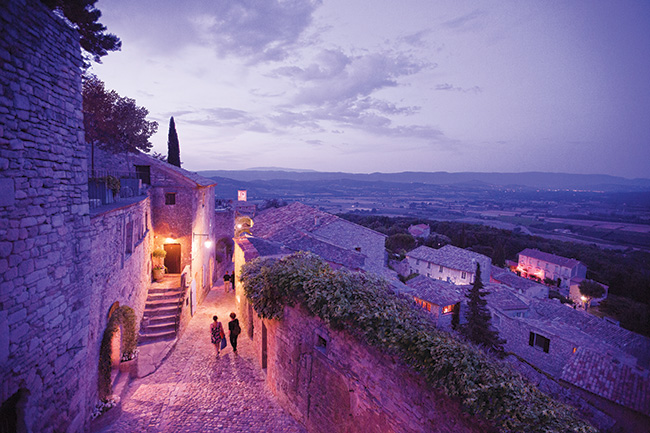
Lacoste, a medieval village in the Luberon that once lay in ruins from war and neglect, has been brought back to life as a vibrant community for art students thanks to the insight of an exceptional woman.
“I saw Lacoste rising out of the surrounding orchards, brilliant greens and browns giving way to the whites and yellows of the stone houses and old medieval fortress in the sun… Their pink and terracotta roofs commingled with the bluest sky, and rising out of it all was the renowned Château du Marquis de Sade, a castle that would become the home of international designer Pierre Cardin.”
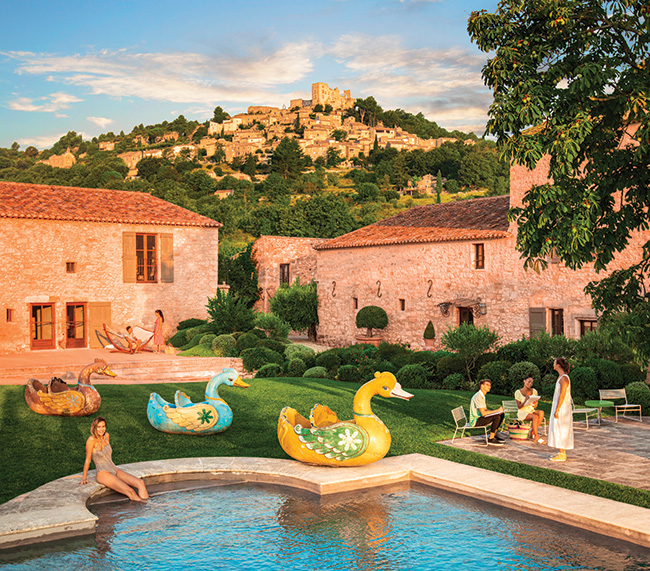
The transformed villa at SCAD © SCAD
This is Paula Wallace’s account, in her memoir entitled The Bee and the Acorn, of her first contact, over 20 years ago, with Lacoste, a remote Luberon
village between Avignon and Apt. She came with a specific idea: to see if the Savannah College of Art and Design (SCAD), the renowned school she had created in Savannah, Georgia (of which she is President) could acquire a decaying art school and its 30 buildings in ruins to create a European campus. Both discouraged and seduced, she wrote: “We climbed the cobbled streets, met representatives of the school who walked us around the village, their properties, all of them in need of serious love and attention… Could we really send fifty or a hundred students across the Atlantic to this place? Could we call it SCAD?”
The answer, it turned out, was a resounding yes. This year, SCAD Lacoste celebrates its 20th anniversary in grand style with an extensive programme of events, highlighted by an exhibition on fashion designer Isabel Toledo in its new Museum of Fashion + Film. Since Paula Wallace’s first visit, SCAD Lacoste has indeed become the nearly completely restored European campus of her dream: a unique place where contemporary art forms are taught in 12th-, 15th- and 19th-century buildings, artfully restored. The campus annually welcomes 500 students, mostly Americans, who come to this unique place from the Savannah and Atlanta campuses to study photography, fashion, advertising, architecture, graphic arts and cinema, among other art/design subjects.
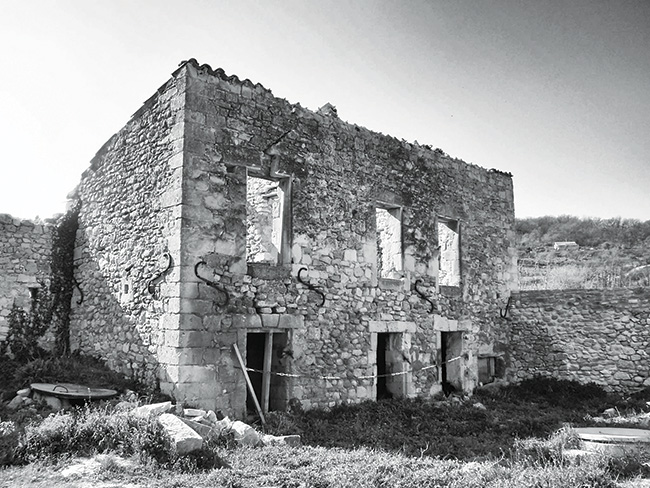
Pre-restoration © SCAD
Cobbled Streets Scented with Sage and Rosemary
Above all, by conducting a major rescue operation of decaying monuments, the College, focused on continuing exchange with the business world, has
enabled the village to rise from ruins and become, with its shops, exhibitions and art galleries, one of the main cultural tourism attractions in the Luberon. Lacoste, which has 400 inhabitants, has thus definitively confirmed an already ancient vocation: in 1763, the Marquis de Sade, the infamous author of the scandalous Justine, moved into the castle where he built a theatre able to accommodate 120 people, considered the predecessor of the Avignon Theatre Festival. The tradition continued: in 2001, Pierre Cardin bought the castle, partially destroyed during the French Revolution, also to live there, and organise summer festivals and concerts (the castle is open from June to September). This reputation as a chic cultural centre is further enhanced by the presence of many artists and celebrities such as John Malkovich and Ridley Scott who settled nearby.
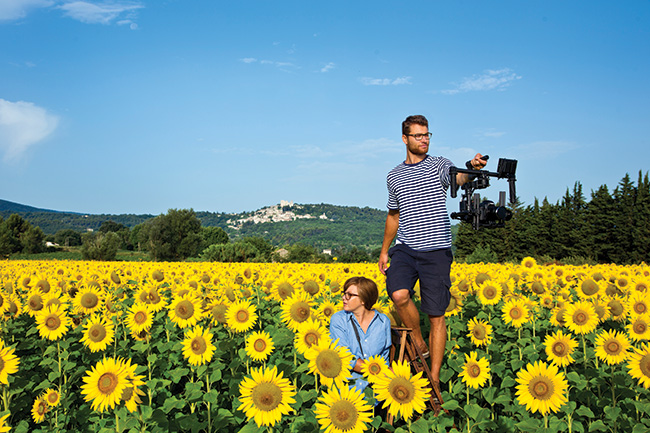
Sunflower fields provide a stunning backdrop © SCAD
“The village of Lacoste, of all the villages of the Luberon, is the only one associated with three names which speak to foreigners. SCAD, Pierre Cardin and the Marquis de Sade are complementary. Not only is this remarkable but it’s also a coincidence, nothing was planned. And Lacoste is an easily pronounceable name, it sounds like France, it makes you want to go there,” says Cédric Maros, the director of SCAD Lacoste, preparing to welcome about 100 students, the first to arrive in two years because of the pandemic.
The campus they find is unique in France: comprising some 50 restored old houses transformed into art galleries, conference and exhibition rooms, student residences and hi-tech classrooms, it occupies a large part of Lacoste. But when strolling through cobbled streets flanked by old stone façades and discreet hanging gardens of sage and rosemary, it’s difficult to believe that just half a century ago, Lacoste was a ghost town, dominated by the sinister ruins of the Marquis de Sade’s castle.
Badly damaged by World War II, then emptied of inhabitants by the rural exodus of the 1950s and 60s, Lacoste might have remained a ghost town were it not for American painter Bernard Pfriem falling in love with it in the 1970s. He bought a house in ruins, restored it with his students and created an art school, Lacoste School of the Arts. It was a success: his charisma and art world contacts attracted personalities like Max Ernst, Man Ray, Lee Miller, Henri Cartier- Bresson and Roland Penrose. Pfriem bought more deserted, ruined houses which no one wanted then. When he died in 1996, the school, wanting to remain operational but experiencing financial difficulties, began looking for a buyer.
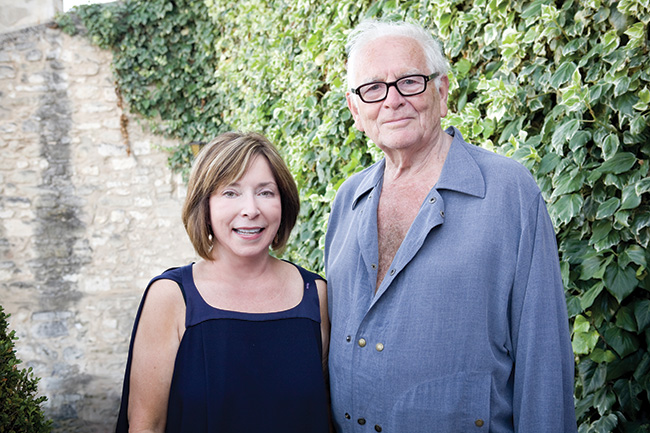
President Wallace with Pierre Cardin © SCAD
“Water Was Running Down the Walls”
Enter Paula Wallace, former schoolteacher, an American-style self-made visionary who, in 1978, bought a small house in Savannah, Georgia, dreaming of her own art and design school there. Its objective, novel at the time, was to connect artists needing work with businesses desperately looking for creative people. The idea was obviously good: in a few years, the scrappy local school mushroomed into a global creative powerhouse with campuses in Savannah and Atlanta welcoming thousands of students. Today, SCAD claims that, for the fifth consecutive year, 99% of students reported being employed, pursuing further education, or both within 10 months of graduation. It counts among its alumni designer Christopher John Rogers and singer India Arie.
After her trip to Lacoste, this strong-willed woman was determined to convince the SCAD board of directors that Pfriem’s school was the ideal extension of the Georgia campuses. She wrote in her memoir: “I told everyone what I’d seen, how merging with this small school could give our students permanent access to an international study experience… To not just travel abroad but live in a medieval village for a term. To collect memories for a lifetime.”
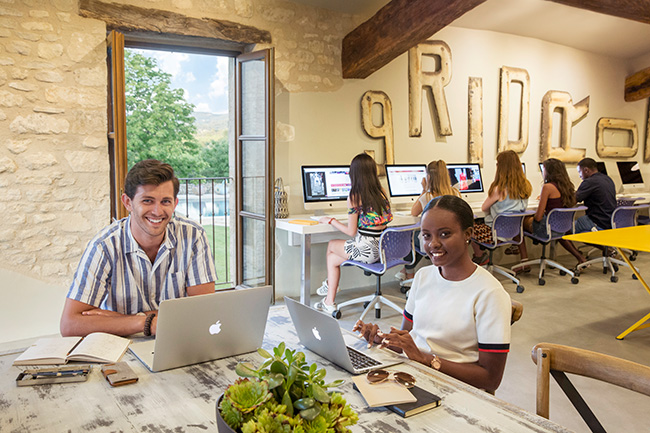
Students at SCAD © SCAD
SCAD, initially frightened by the project’s cost, was convinced and Lacoste School of the Arts donated its 30 houses in ruins to SCAD, a nonprofit university. What followed was a long, complex restoration process. “Our rehabilitation of the academic spaces was slow, meticulous, laboured, reliant upon grant money we received annually through foundations affiliated with the former school,” remembered Wallace in her memoir. About the village houses, she said: “The village sits on the side of a mountain of limestone, with natural crevices and veins carrying water, caverns in every other building, water running down the walls in winter, right through the classrooms. We solved the water issue, transforming one of the oldest structures in town into a Mac lab, perhaps the only computer lab in the history of American higher education housed in a medieval fortress.”
Today, these restored buildings, many open to the public through free or guided tours, proudly display signs identifying them: Residence du SCAD, the 16th-century guest housing; Boulangerie, a former bakery, now a social centre where a large spectacular stone beehive oven serves as reading nook; ShopSCAD, Pfriem’s former studio with breathtaking views of the valley and neighbouring village Bonnieux, now a curated gallery boutique offering artwork by SCAD alumni; and Acorn Cottage, a rustic lodge for SCAD Alumni Atelier artist residency.
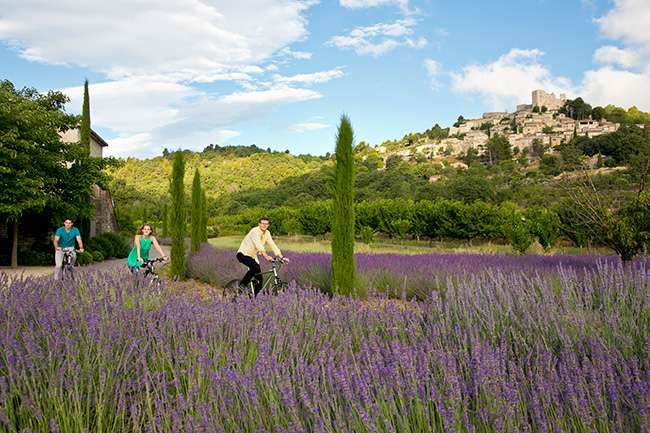
Lavender fields provide inspiration for SCAD’s students © SCAD
“Notre Ami, Pierre Cardin”
What’s worth seeing is the Maison Basse (Lower House), which, at the bottom of the village, once housed the Marquis de Sade’s stables. When she first saw it, Wallace was intrigued by the ruined structure and asked, “What is it now?” Her guides replied simply: “Nothing. Rubble.”
Already, in the late 18th century, the Marquis had done considerable work there, adding a vast salon to this simple farmhouse, creating a game room and respite for guests. When SCAD acquired it, the building was in a deplorable state: a tree had broken through the roof, the stairs had collapsed or been displaced by vines covering the walls.
Thanks to the American William Talbott Hillman Foundation, SCAD managed to save the building from demolition while preserving what it could: roof beams and staircase stones were numbered and dismantled, then everything was rebuilt by hand, trying to preserve the original layout. SCAD students alongside faculty members from the Historic Preservation and Photography Departments painstakingly documented the restoration process.
Today, the Maison Basse has regained its former glory and houses classrooms used for courses in architecture, art history, painting, historic preservation, landscaping and photography, among others. It also has accommodation, a theatre, a performance space, a conference hall and a swimming pool. For this vast undertaking, totalling tens of millions of euros, Wallace was appointed Chevalier in the Ordre des Palmes académiques, one of the oldest civilian honours bestowed on distinguished academics by the French Republic.
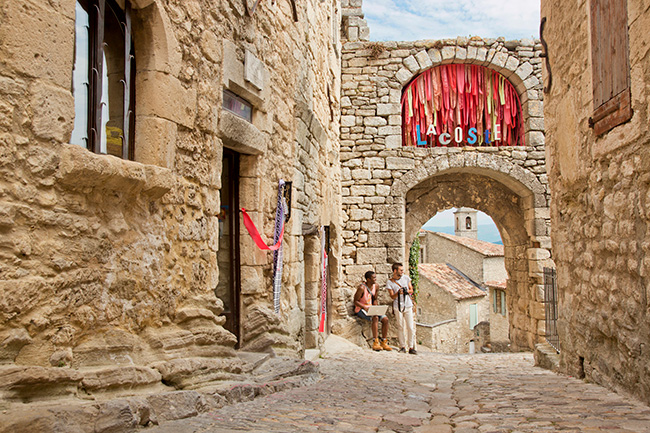
Stunning old buildings in Lacoste © SCAD
It should be noted that SCAD is not the only player in town: during his lifetime, fashion designer Pierre Cardin acquired around 50 houses in the village, his aim being to make Lacoste the “Saint-Tropez of Culture”. Although his project sparked some controversy at the time, SCAD always had excellent relations with the couturier, who died two years ago.
“We have always been very good neighbours,” observes Cédric Maros. Indeed, more than a good neighbour, Pierre Cardin became a champion of SCAD and a mentor to its students, whom he would often visit, despite his old age. To pay tribute, SCAD last year organised an exhibition dedicated to the great couturier entitled “Notre ami, Pierre Cardin” (“Our friend, Pierre Cardin”); it was a roaring success, attracting 18,000 visitors in four months.
From visionary to visionary, it was a fine tribute. As Paula Wallace, who is 73, put it recently: “Every entrepreneur has passion, energy and hope, but these qualities alone do not suffice. You also need a clear and prescient vision for a need in the market that your product can meet. Essentially, you need to find a blank space and a brilliant way to fill it.”
Find out more about SCAD Lacoste here and Château de Lacoste here.
From France Today Magazine
Lead photo credit : The sun sets on Lacoste © SCAD
Share to: Facebook Twitter LinkedIn Email
More in education in France, French culture, Lacoste, lavender, Luberon, Provence, SCAD
Leave a reply
Your email address will not be published. Required fields are marked *



